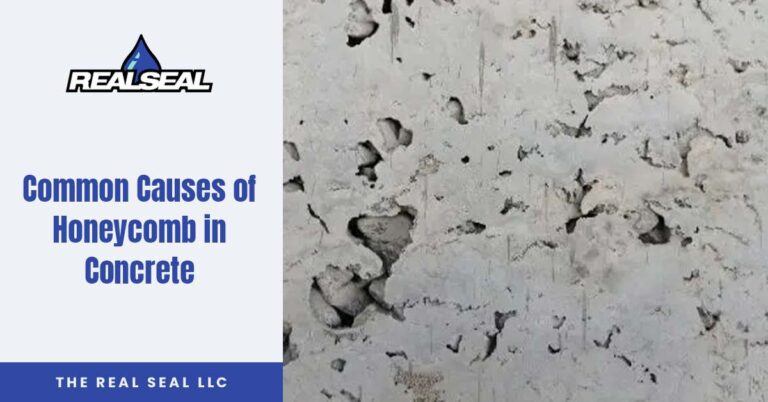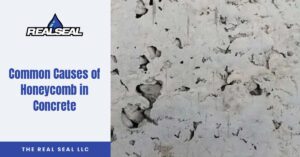Ever notice your concrete appearing course and rocky, kind of looking like a honeycomb? This is a real issue that occurs in concrete. For insight on what exactly honeycomb in concrete is, as well as the common causes of honeycomb in concrete, read the article below. Maybe you might just find a way to prevent this from occurring and how to treat or repair it if it has already occurred.
What Is It?
Honeycomb is a rough and stony surface that appears on concrete when there are air voids between the course and the aggregate. This happens when insufficient fine material gets into the concrete mixture due to poor mixing or incorrect aggregate grading. Normally, workers can identify this when the shuttering of concrete is removed or using techniques of ultrasonic testing.
Causes of Honeycomb
These hollow pockets known as honeycomb occur when the cavities and areas of the space are not all filled or reached by the poured concrete. Three common causes of honeycomb in concrete include:
- Stiff concrete is used.
- Improper vibration is used during the concrete process.
- There is less cover for reinforcement bars.
While there are more reasons that this occurs, these three mentioned above are the most common reasons.
Effect of Honeycomb In Concrete
Honeycombing in concrete can lead to shrinkage cracks, reduced compressive strength, reduced durability and other issues that affect the performance of the concrete over time. It can also cause weakened load bearing capacity and negative impacts on waterproofing and corrosion protection systems.
How to Prevent Honeycomb in Concrete
To prevent honeycombing in concrete, several approaches can be taken. The first step is to ensure the appropriate mix design of the concrete. This means selecting a well-graded aggregate with a proper ratio of fine-to-coarse particles and controlling the water-cement ratio to achieve good workability and a high degree of compaction. Good consolidation is also necessary to reduce honeycombing; this can be done through vibrating or tamping during the pouring process.
In addition, curing the concrete properly is essential to decrease permeability and promote strength gain. It should be cured immediately after the initial set and maintained wet for at least seven days. This will help limit shrinkage cracks caused by moisture evaporation and enable better hydration of cement particles, filling any small air pockets that may form due to poor consolidation.
Remedies for Treatment and Repair
While there are at-home remedies one can use to repair and fix any honeycombing concrete issues, it is best to have a professional look over and assess the best course of action for fixing this problem. In many scenarios, to fix honeycomb, re-concrete might need to take place. This will hopefully help it from occurring in the future.
Read more about – Tips for Choosing a Basement Waterproofing Contractor
If this issue is occurring in your home foundation or concrete in your basement, please reach out to The Real Seal LLC. Our team of professionals can provide you with the best foundation repair in Chicago. Check out our website or give us a call today!







4 Responses
I have a stairwell poured in 12/2021 , I have so much water after every rain oozing up from the area between the stairwell walls and the stairwell floor. We have tried everything using fastest concrete against the walls and floors then a very thick tar coating the entire area. Also we are placing a drainage tile on the outside of the entire addition, a new roof and now coming soon a new gutter system but still it oozing water. Any suggestions will help. Thanks
Hi Shelly!
With exterior stairwells, you often get water building up around it. Interior stairwells can have the same issue. We would recommend a drain tile to be installed at the landing at the bottom all around the edges that leads to a sump pump inside. This, if properly installed, will keep the water under control.
In terms of Aloka concrete, the reason for this is the lack of cohesion between concrete particles and the separation of the cement and aggregate phase due to low pressure.
Thanks for the info, Betonaloka!